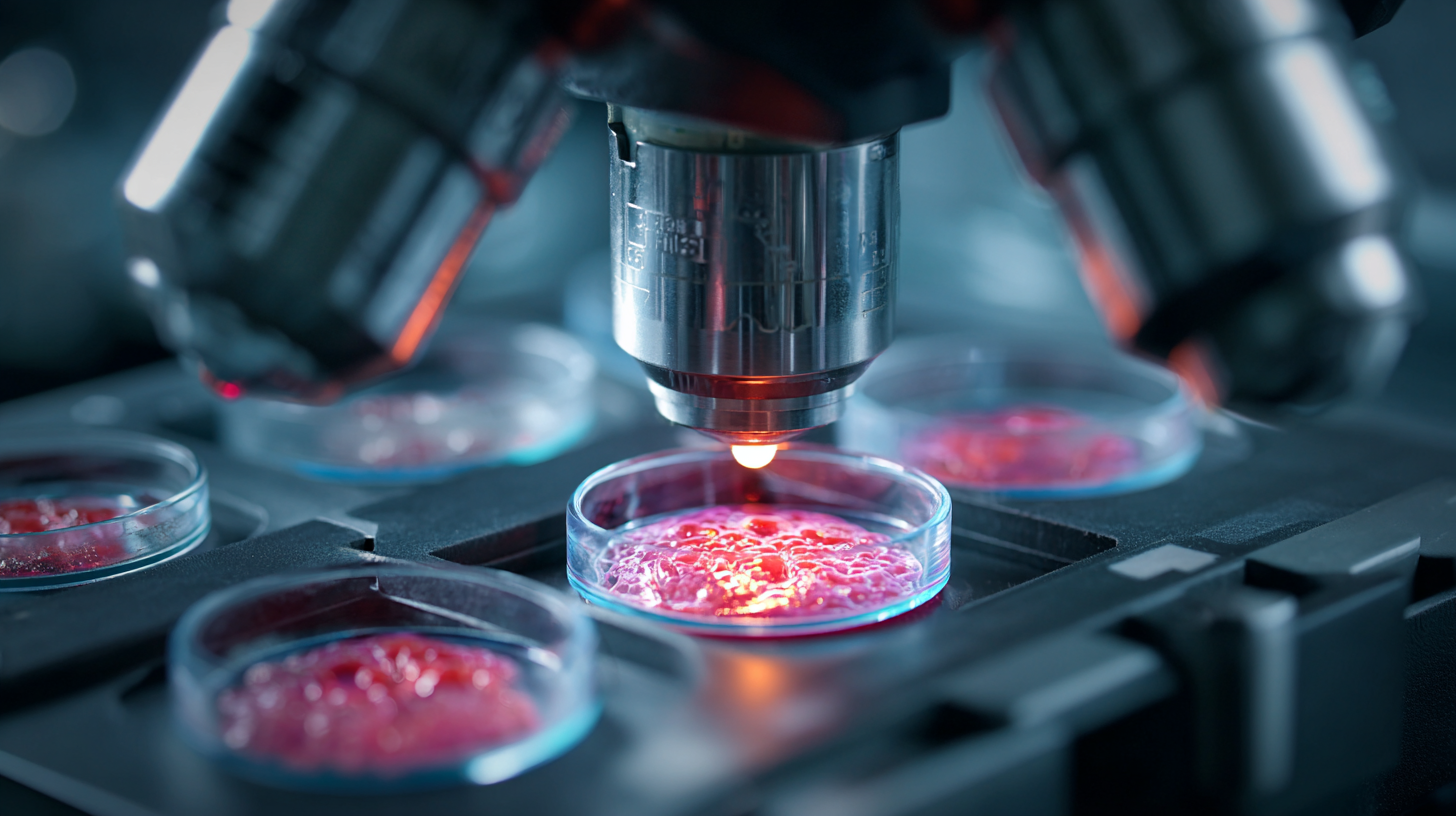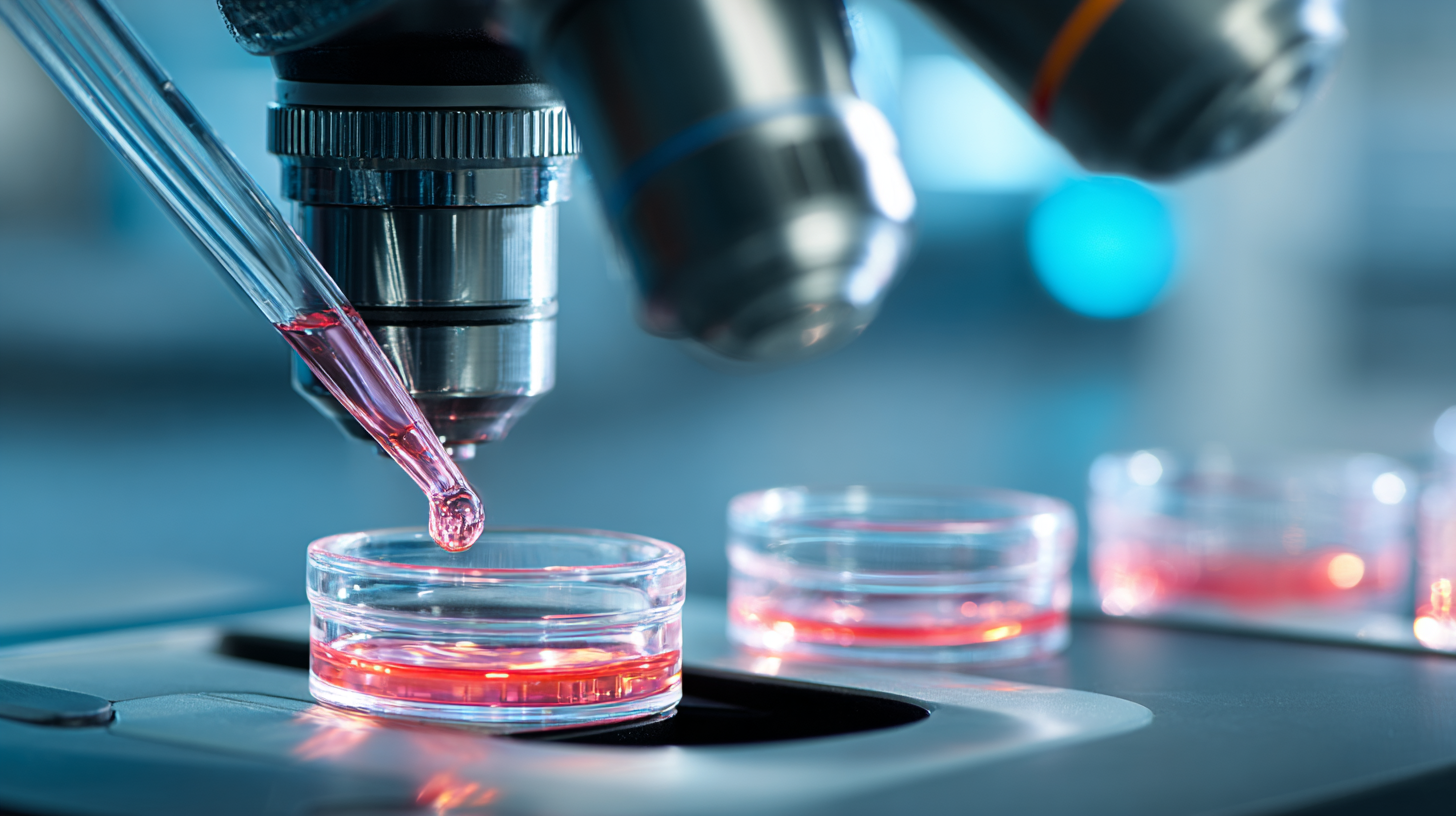In the fast-paced world of scientific research, optimizing laboratory workflows is crucial for enhancing efficiency and driving impactful discoveries. The integration of innovative cell tools has been identified as a key factor in streamlining processes and improving data quality across various fields of life sciences. According to a recent report by the Laboratory Equipment Association, laboratories that adopt automated cell analysis and management tools see a 30% increase in productivity, allowing researchers to focus on interpretation rather than routine tasks.
As we look toward 2025, the demand for efficient laboratory practices is expected to escalate, with research activities projected to grow at an annual rate of 6.2%, according to a study by Global Market Insights. This growth is accompanied by an increasing reliance on advanced cell tools, which not only enhance accuracy in cell-based experiments but also facilitate quicker decision-making and results dissemination. Harnessing these essential tools can significantly impact research outcomes, leading to breakthroughs that were previously unattainable.
In light of these advancements, the following discussion outlines ten essential cell tools that can be leveraged to streamline laboratory workflows. By embedding these technologies into daily operations, researchers can achieve a new standard of efficiency and pave the way for innovative research achievements.

In today’s fast-paced research environment, effective sample management and storage are crucial for enhancing laboratory workflows. Innovative lab equipment, such as automated sample storage systems and intelligent inventory management software, can significantly reduce the time spent on locating and handling samples. These tools provide a streamlined approach to sample organization, ensuring that researchers can access specimens quickly and efficiently. By integrating advanced tracking technologies, laboratories can minimize human error and maintain a well-documented chain of custody for each sample.
Moreover, temperature-controlled storage solutions play a vital role in preserving sample integrity. Utilizing cryogenic storage tanks and ultra-low freezers helps ensure that sensitive biological samples remain viable over extended periods. Coupling these storage systems with barcode scanning and data management software allows for real-time monitoring of sample conditions, providing peace of mind for researchers concerned about sample stability. As laboratories embrace these innovative tools, they can enhance research efficiency and ultimately drive more reliable results.
In today's research landscape, integrating automation tools is essential for minimizing manual errors and enhancing efficiency in laboratory workflows. By utilizing AI-driven technologies, researchers can streamline processes such as data collection, analysis, and sample management. Automated systems not only reduce the risk of human error but also allow scientists to focus on more complex tasks, ultimately accelerating research timelines and improving data reliability.
Furthermore, automation plays a pivotal role in maintaining compliance within research protocols. By automating documentation and reporting processes, laboratories can ensure that they meet regulatory standards without the labor-intensive overhead. Additionally, advanced analytics powered by artificial intelligence can help identify inconsistencies or areas for improvement in workflows, further enhancing operational efficiency. As automation continues to evolve, it will be crucial for research institutions to adopt these technologies to remain competitive and innovative in their fields.
In today’s fast-paced research environment, leveraging data management software is crucial for enhancing collaboration among laboratory teams. These tools allow researchers to organize, plan, and track their projects effectively, ensuring that everyone is on the same page regarding tasks and deadlines. By utilizing project management software, teams can streamline their workflows, minimize redundancies, and keep communication flowing seamlessly. This enables researchers to focus on their core work rather than getting bogged down by administrative tasks.
Additionally, the integration of collaboration software fosters a culture of teamwork and innovation. With the right tools in place, information can be shared effortlessly among team members, regardless of their physical location. This is particularly important in today’s hybrid work settings, where remote collaboration is often necessary. Utilizing features such as document sharing, real-time editing, and task assignments helps ensure that all members are engaged and that projects progress smoothly. Ultimately, the right data management and collaboration tools can transform laboratory workflows, leading to increased research efficiency and more meaningful results.

In today's fast-paced laboratory environments, implementing real-time monitoring systems has become crucial for enhancing experiment accuracy and overall research efficiency. Recent advancements highlight the significant role of real-time monitoring across various applications, from medical to environmental research. For instance, a pioneering study utilizing deep learning for real-time airway monitoring of rabbits with tracheostomy tubes illustrates how innovative technologies can be effectively employed in assessing critical health conditions. This research not only sets the stage for potential applications in human patients but also emphasizes the growing importance of integrating artificial intelligence in monitoring systems.

Furthermore, the introduction of IoT-based solutions, such as dynamic monitoring systems that utilize multi-modal sensor data fusion, showcases the transformative potential of real-time analytics. These systems facilitate immediate feedback on participants' conditions, which is vital for applications like driver fatigue detection and elderly health monitoring. According to industry reports, the adoption of IoT technologies is projected to enhance the efficiency of health monitoring systems substantially, with estimates indicating a potential increase in operational accuracy by over 30% in clinical settings. As laboratories continue to seek methods for streamlining workflows, the integration of real-time monitoring systems will undoubtedly serve as a cornerstone for advancing research methodologies.
In laboratory settings, efficient reagent preparation and handling are crucial for enhancing research workflows. The adoption of streamlined protocols, such as the versatile QuEChERS sample preparation approach, has transformed how samples are processed. Since its introduction in 2003, QuEChERS has garnered attention for its ability to provide quick, effective, and user-friendly solutions for complex analyses, making it a standard in laboratories around the globe. By simplifying procedures, researchers can reduce the time and effort spent on sample preparation, allowing them to focus on more critical aspects of their experiments.
Leveraging AI-driven innovations further enhances laboratory efficiency. With a growing number of organizations implementing advanced technologies, the integration of these tools into laboratory workflows can lead to significant improvements in both productivity and accuracy. By streamlining reagent handling and employing automated solutions, laboratories can minimize errors and ensure consistent results. As these technologies continue to evolve, researchers are presented with exciting opportunities to optimize workflows and drive impactful discoveries in their respective fields.